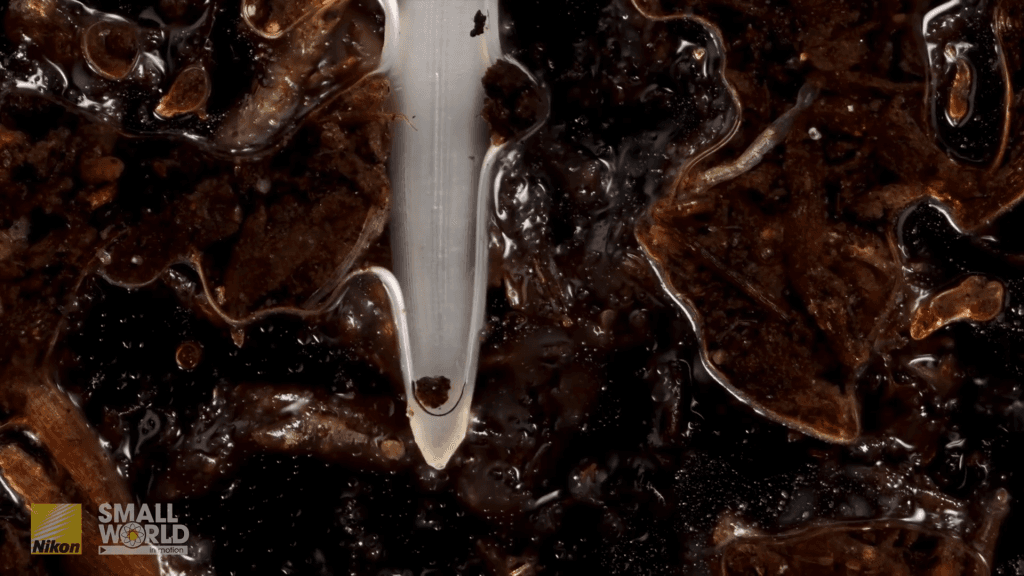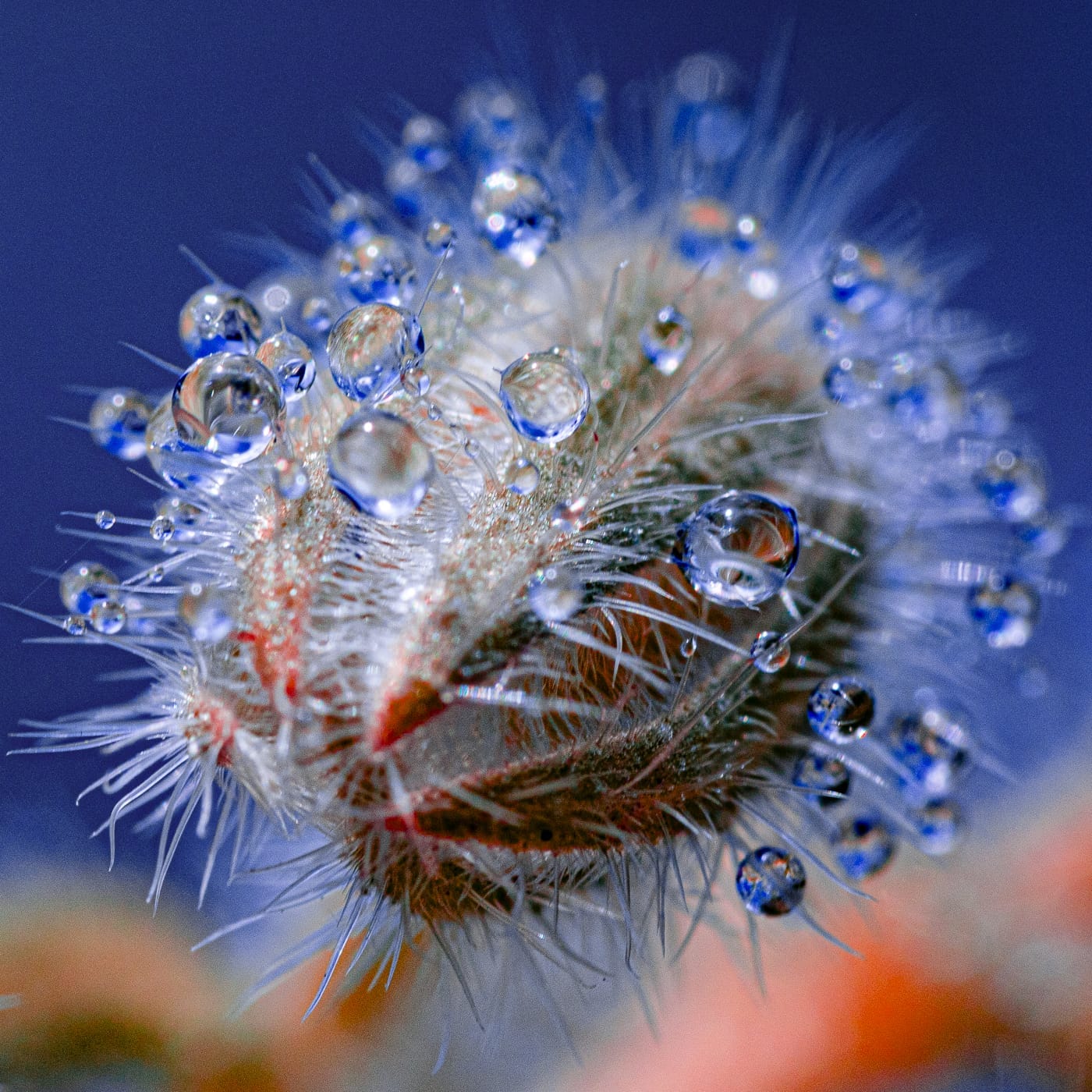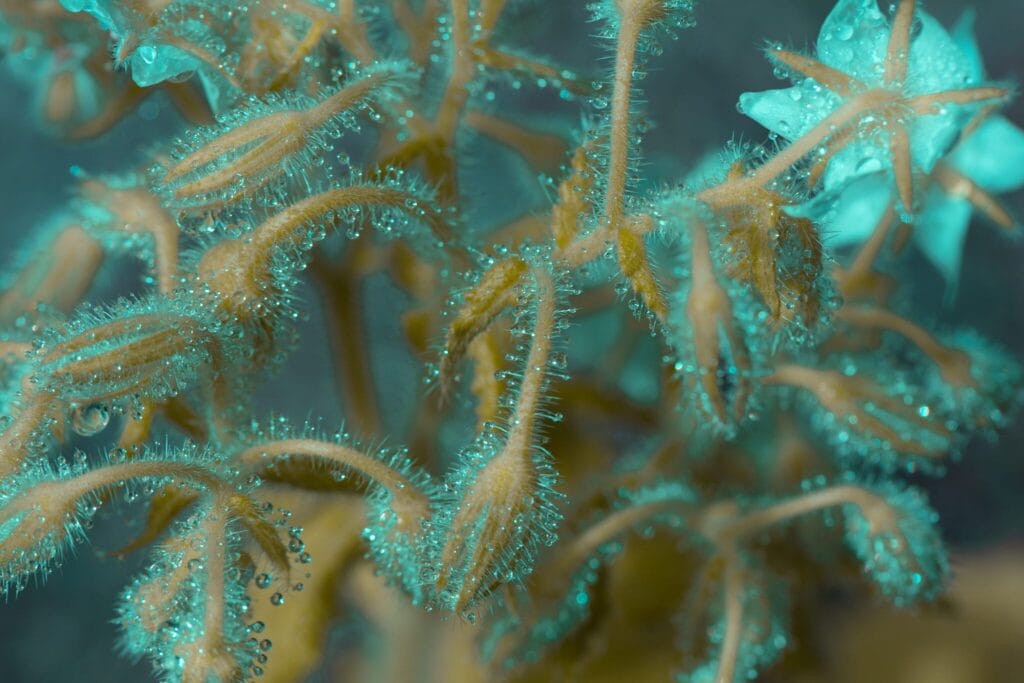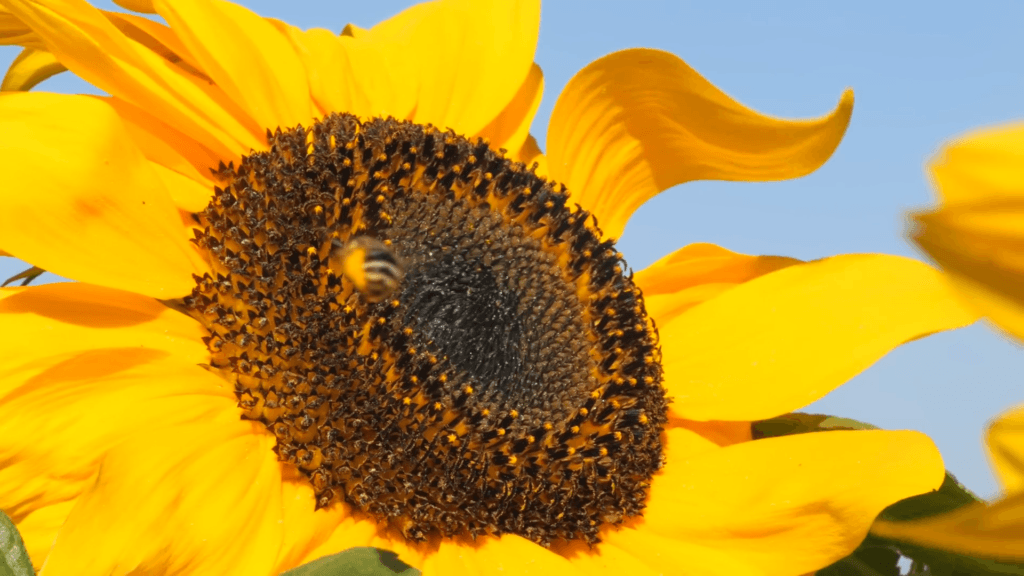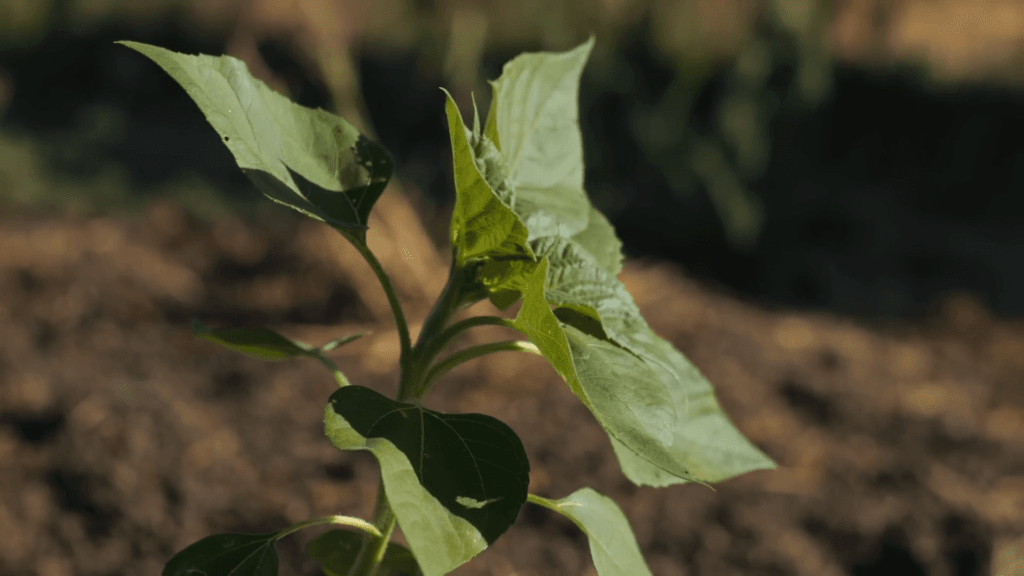As children, most of us plant a seed or two and watch it sprout, but we never get a view quite like this one. This microscopic timelapse shows the roots of a cornflower plant extending into moist, porous soil, establishing xylem, and extending root hairs outward to collect water and nutrients to fuel further growth. At the end, there’s even a close-up view of flow inside the root hairs. What an incredible glimpse inside a world we so often take for granted! (Video and image credit: W. van Egmond; via Colossal)
Tag: plants

Listening for Pollinators
Can plants recognize the sound of their pollinators? That’s the question behind this recently presented acoustic research. As bees and other pollinators hover, land, and take-off, their bodies buzz in distinctive ways. Researchers recorded these subtle sounds from a Rhodanthidium sticticum bee and played them back to snapdragons, which rely on that insect. They found that the snapdragons responded with an increase in sugar and nectar volume; the plants even altered their gene expression governing sugar transport and nectar production. The researchers suspect that the plants evolved this strategy to attract their most efficient pollinators and thereby increase their own reproductive success. (Image credit: E. Wilcox; research credit: F. Barbero et al.; via PopSci)

“Spines”
Water droplets cling to spine-covered plant life in this series from photographer Tom Leighton. The hairs are hydrophobic — notice how spherical the drops appear. Many plants make parts of their leaves and stems hydrophobic in order to redirect water toward their roots, where it can be taken in. Others use hair-like awns to collect and draw in dew that supplements their water capture. (Image credit: T. Leighton; via Colossal)

How Sunflowers Follow the Sun
Sunflower blossoms face east, presenting their blooms to the morning sun and the bees that come exploring with it. But before they grow their massive flower, each plant spends the day following the sun, greeting it in the east and tracking it westward all day. Overnight, the plant reorients eastward to start over again. The motion occurs thanks to the plant internally shifting its water supply. During the day, it swells cells on the east-facing side of the plant, gradually lengthening that side and causing the plant to tip westward. At night, it switches to swelling the west-facing side. Why go to all this trouble? By following the sun, the plant is able to photosynthesize and grow more effectively. (Video and image credit: Deep Look)

Sunflower plants follow the sun during the day and reset overnight. 
A Pitcher Plant’s Rain-Triggered Trap
Pitcher plants all use slippery rims and sticky digestive juices to capture and trap their insect prey. But two species of pitcher plant independently evolved an extra trap: a rain-activated springboard lid. Both the Seychelles pitcher plant and the slender pitcher plant — separated geographically by 6000 kilometers — have a springy, near-horizontal “lid” that sticks out over their pitcher. The underside of the surface is slippery, though less so than the pitcher’s lip and walls. Unsuspecting ants crawl under the lid, confident that they can keep their footing, and then — bang — a rain drop hits the springboard. That impact catapults the insect directly into the drink. There’s no escaping now.
How did two widely separated, independently evolving plants both settle on this technique? Scientists think it was random chance. Pitcher plants are highly variable in their pitcher size, shape, and features. The scientists suggest that by trying lots of random combinations, these two species hit upon a particular arrangement that works really well for them. (Video and image credit: Science)

Dry Plants Warn Away Moths
Drought-stressed plants let out ultrasonic distress cries that moths use to avoid plants that can’t support their offspring. In ideal circumstances, a plant is constantly pulling water up from the soil, through its roots, and out its leaves through transpiration. This creates a strong negative pressure — varying from 2 to 17 atmospheres’ worth — inside the plant’s xylem. If there’s not enough water to keep the plant’s inner flow going, cavitation occurs — essentially a tiny vacuum bubble opens in the xylem. That cavitation isn’t silent; it creates a click at ultrasonic frequencies above human hearing. But just because we don’t hear it doesn’t mean that sound goes unheard.
In fact, recent research suggests that, not only do moths hear the plant’s cavitation cries, female moths will avoid laying eggs on a healthy plant that sounds like it’s cavitating. Evolutionarily, this makes sense. Hatchlings rely on their birth plant for food and habitat; if an adult moth picks a dying, drought-stressed plant, its offspring won’t survive. It pays to be sensitive to the plant’s signs of distress. (Image credit: Khalil; research credit: R. Seltzer et al.; via NYTimes)

Inside the Squirting Cucumber
Though only 5 cm long, the squirting cucumber can spray its seeds up to 10 meters away. The little fruit does so through a clever combination of preparation and ballistic maneuvers. Ahead of launch, the plant actually moves water from the fruit into the stem; this reorients the cucumber so that its long axis sits close to 45 degrees. It also makes the stem thicker and stiffer.

This high-speed video shows the explosive release of the squirting cucumber’s seeds. When the burst happens, fruit spews out a jet of mucus that propels the seeds at up to 20 m/s. The initial seeds move the fastest — thanks to the fruit’s high-pressure reservoir — and fly the furthest. As the pressure drops, the jet slows and the fruit’s rotation sends the seeds higher, causing them to land closer to the original plant. With multiple fruits in different orientations, a single plant can spread its seeds in a fairly even ring around itself. (Research and image credit: F. Box et al.; via Gizmodo)

“Plants That Explode”



We often think of plants as passive and stationary, but the truth is that some plants move faster than we can even see. In this “True Facts” video, Ze Frank takes a look at a whole host of fast-moving plants, including horsetail plant spores that walk and jump, trebuchet-like bunchberry dogwood, vortex-ring-shooting moss, and moisture-driven self-digging seeds. These plants all use clever mechanisms that leverage water to spread the plant’s reproductive material at little to no energy cost to the plant itself. (Video and image credit: Z. Frank)

How Ferns Spread Themselves



Ferns don’t rely on pollen and pollinators to spread. Instead, they use a little water and a lot of ingenuity, as shown in this video from Deep Look. Peer underneath a fern and you’ll find leaves dotted with spores. As they mature, water evaporates from the sporangium, eventually triggering a catapult that launches the spores. Those spores grow little gametophytes that produce the fern’s sperm and eggs; given a little rain or a nice puddle, the sperm and eggs can find each other and trigger the birth of a new baby fern. (Video and image credit: Deep Look)

Mimicking Plant Movement
Many plants control the curvature of their leaves by selectively pumping water into cells that line the outer surface. This swelling triggers bending. Engineers created their own version of this structure by 3D-printing trapezoidal shapes onto a fabric. Then, they heat sealed a second layer of fabric over this, creating airtight channels. When inflated, these channels make the structure bend, allowing them to create complex shapes by selectively inflating different areas. (Image credit: T. Gao et al.; via GoSM)

